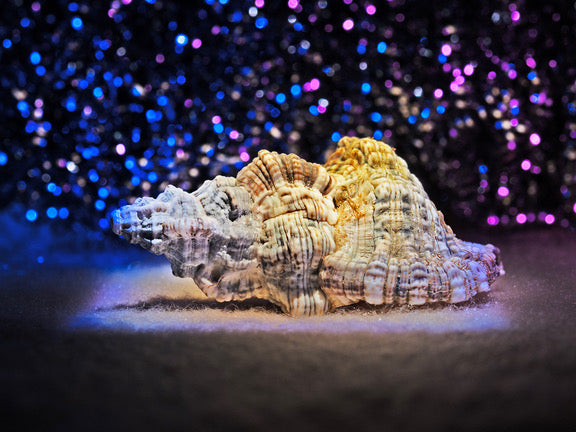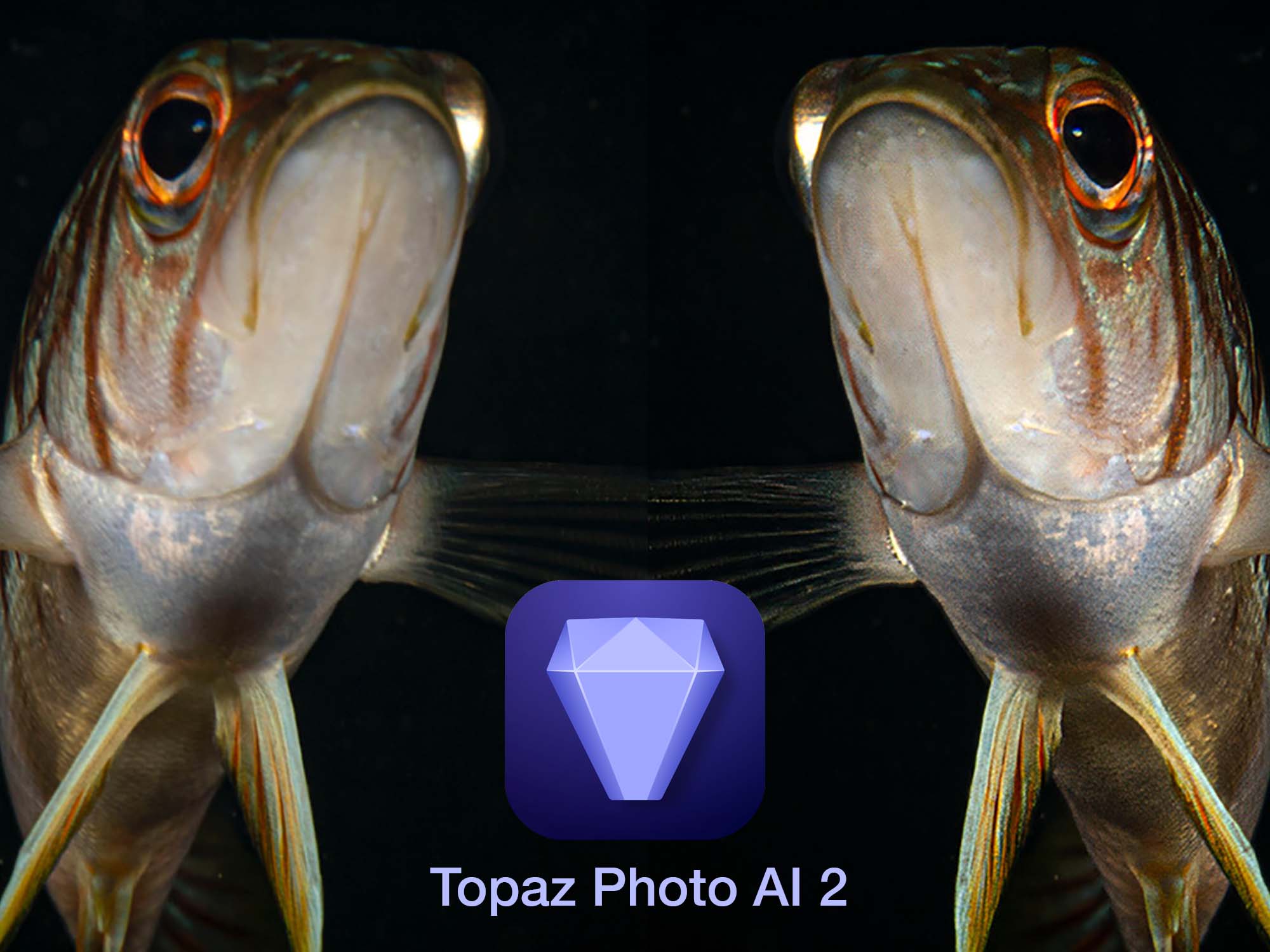By Glenn Ostle
In the article Go Small or Go Home, I wrote about some of the things my partner Pam Hadfield and I learned by attending a macro photography workshop at the Crystal Blue Resort in Anilao, Philippines.
Throughout the week we were encouraged to get close to small subjects; shoot upwards; and create a pleasing “bokeh,” a Japanese word that in photography refers to a soft out-of-focus background.
One day we shot with only wide apertures which creates a narrow focus area surrounded by soft colors. Another day we focused on finding unique behaviors such as cleaning, mating, feeding, hunting, or “brooding.”
The workshop also included discussions about lighting and the use of a snoot: a separate light source that creates a small, adjustable pool of light to highlight all or part of a subject.
By the end of the week, we had learned a number of ways to improve our macro photography.
When we returned home and reviewed macro photos taken by well-known underwater photographers, we realized that one area we needed to explore further was the use of colored lighting.
That was about to change!

This small squat shrimp was considerate enough to pose atop a tube anemone. Blue and magenta lights were used to highlight the tentacles while a snoot brought out the colors of the shrimp. 1/180 • f/8 • ISO 400. © Glenn Ostle
On a planned trip to Tulamben, Bali we elected to hire a private guide with knowledge of local dive sites and who was also proficient in creative macro lighting techniques. It turned out that we could not have been more fortunate than to spend four days diving with local dive guide and excellent photographer Ajiex Dharma.
Ajiex’s first question was about my camera set up. I told him that for macro I was using a Nikon Z6 mirrorless camera with a AF-S MICRO NIKKOR 105mm 1:2.8 GED lens along with +5 and +10 diopters. His recommended that the +10 would be best for the size of subjects we would likely encounter.
Ajiex explained that we would be using strobes for some shots but for most photos we would turn off the strobes and shoot using only the illumination from the lights he brought with him. These included several fitted with numerous different colored filters and one bright light to serve as the snoot.
During our dives Ajiex demonstrated how to arrange the colored lights to create varying colors with overlapping patterns plus how common items could be used to reflect the lights providing an interesting look to both subject and background.
Once set up and all the lights turned on the entire scene took on a totally different look. It was like being in an underwater photo studio as we carefully arranged and rearranged lights around the subjects to achieve different effects.

A snoot was used to highlight this Harlequin Shrimp while magenta and blue lights reflected on a pad of steel wool, provided the colorful background to match the mottled blue and red markings on the shrimp. 1/180 • f/8 • ISO 400 © Glenn Ostle
After watching Ajiex carefully evaluate and then set up the various scenes we realized that this fascinating subset of macro photography needs to be approached cautiously and selectively.
First, unless photographing in places primarily known for macro subjects, few diving conditions will allow an underwater photographer the necessary time or opportunity to erect elaborate set ups.
Second, working close to small fragile animals requires being exceptionally careful. We have found the best practitioners of this type of photography are divers with excellent buoyancy who go to great lengths not to harm the animal being photographed or disrupt the area around it.
Keeping these concerns in mind, in the future we plan to try more creative lighting whenever conditions allow. It is a great way to give a fresh new look to some subjects that we have been photographing the same way for years.
The following are a few examples from our time with Ajiex along with a few words of explanation about how the photos were created.

A snoot and several colored lights were used to highlight the small coral shrimp resting inside a piece of coiled whip coral which we found growing out of the sand. 1/180 • f/8 • ISO200 © Glenn Ostle

We found this Donut Nudibranch perched atop a piece of coral. White light reflected off a pad of steel wool, gave it a party-like look so we call it “Disco Donut.” 1/180 • f/8 • ISO 200 © Glenn Ostle

An orange back light was used to show the outline of the sea horse while the snoot helped highlight the eye. 1/250 • f/16 • ISO 200 © Glenn Ostle

This tiny nudibranch is known as “Shaun the Sheep” due to its resemblance to a character in a series of British claymation films. It is only about the size of a grain of rice and is normally found feeding on algae on a leaf. A snoot shining downward brought out the green color of the leaf, while a green colored light provided complementary green ovals in the background. 1/500 • f/8 • ISO 200 © Glenn Ostle

We call this “Shrimp in the Moonlight.” A round yellow light was used in the background to simulate the moon, while an orange light highlighted the tips of the coral and a snoot lit the shrimp. 1/250 • f8 • ISO 200 © Glenn Ostle

Red and yellow lights were used to add an aura of mystery to this Yellow Rhinopia. 1/180 • f/8 • ISO 200 © Glenn Ostle

A white bubble-like background makes this colorful nudibranch stand out. 1/180 • f/11 • ISO 200 © Glenn Ostle

The objective in this photo was to highlight just the outline of the eel using an orange backlight, while the snoot was used to highlight the eye. 1/180 • f/8 • ISO 400 © Glenn Ostle

A wide aperture and a snoot helped focus on just the front of this nudibranch. A blue light in the background matches and helps highlight the blue “frill” of the nudibranch. 1/250 • f/5.6 • ISO 200 © Glenn Ostle

An orange backlight was used to outline this Leaf Scorpion fish. We elected to leave in the orange “bubbles” at the top of the photo created by the colored light hitting backscatter in the water, as they seemed to add to the photo. 1/250 • f/8 • ISO 200 © Glenn Ostle

An example of the lighting arrangement. A piece of steel wool is positioned behind the shell to create the twinkling bokeh in the background.
 Glenn Ostle is an Ikelite Ambassador living in Charlotte, North Carolina, USA. He and his partner, Pam Hadfield, travel the world to dive and photograph. His articles have appeared in a number of publications, and his photos have been recognized internationally and have appeared on the covers of a number of magazines. See more of his work at featherandfins.smugmug.com. Read more...
Glenn Ostle is an Ikelite Ambassador living in Charlotte, North Carolina, USA. He and his partner, Pam Hadfield, travel the world to dive and photograph. His articles have appeared in a number of publications, and his photos have been recognized internationally and have appeared on the covers of a number of magazines. See more of his work at featherandfins.smugmug.com. Read more...
Additional Reading
Why Your Lens May Need a +4 Diopter Underwater
Cousteau's Aquarium | Sea of Cortez with the Nikon Z6
Go Small or Go Home: Macro Photography in the Philippines
Maintaining Your Macro Eye | Using Underwater Techniques on Land
Super Macro Underwater Photography Techniques












![Instagram Tips for Underwater Photographers [VIDEO]](http://www.ikelite.com/cdn/shop/articles/Instagram_Tips.jpg?v=1705065967&width=2000)
